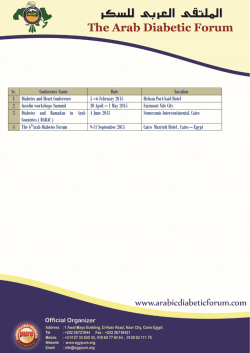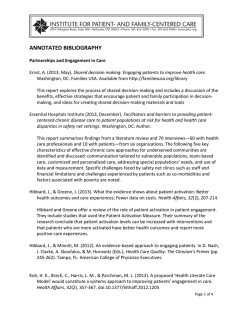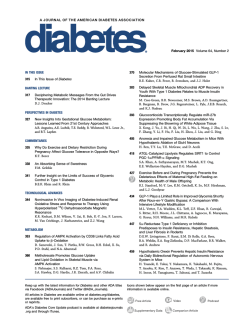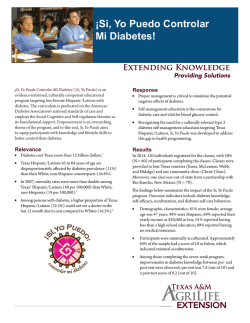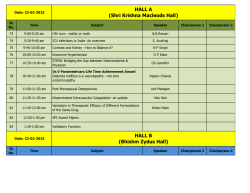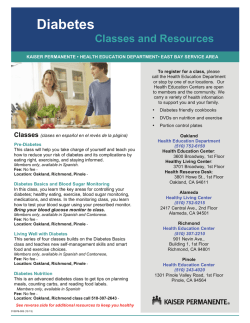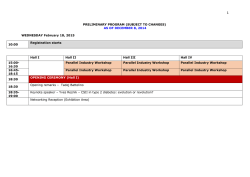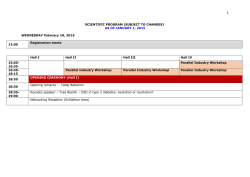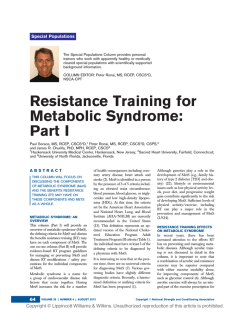
why us hispanics require a tailored approach to type 2 diabetes
WHY U.S. HISPANICS REQUIRE A TAILORED APPROACH TO TYPE 2 DIABETES (T2D) CARE Hispanic T2D patients perceive and manage diabetes differently than non-Hispanic T2D patients ~29 million 12.8% Hispanics are almost Of the people who have diabetes in the United States1: 2 2X as likely 7.6% 2 vs. as non-Hispanic whites to be diagnosed and are more likely to have poor blood sugar control3 Hispanic T2D patients are more likely to feel a sense of isolation, shame and helplessness than non-Hispanic T2D patients view diabetes 1asin 3 a death sentence (33%) vs. <¼ of non-Hispanic T2D patients (24%) 48% feel their diabetes controls them vs. 32% of non-Hispanic T2D patients sometimes feel 34% isolated from their friends, family or community due to diabetes nearly 2X as likely as non-Hispanic T2D patients (18%) 55% Over half thought they would get T2D, as they know many people who have it vs. 34% of non-Hispanic T2D patients Family plays a bigger role for Hispanic T2D patients than for non-Hispanic T2D patients 3say in 4 family has a great deal of influence on their: MOTIVATION to keep their T2D under control 76% vs. 51% of non-Hispanic T2D patients WILLINGNESS to actively take control of their T2D 75% vs. 58% of non-Hispanic T2D patients Hispanic T2D patients admit having much more difficulty adjusting to life with T2D than non-Hispanic T2D patients 50% report difficulty Only know an ideal A1C 40% (blood sugar) level is 7% or less making lifeystyle changes as part of their diabetes treatment vs. 32% of non-Hispanic T2D patients vs. 60% of non-Hispanic T2D patients >to have 2Xchallenges as likely remembering to 54% Over half admit that sometimes they don’t take diabetes as seriously as they should take their medications on time as part of their diabetes treatment (38%) vs. 43% of non-Hispanic T2D patients vs. 16% of non-Hispanic T2D patients When feeling good 59% More than 5X 1 in 5 admit being very or extremely likely to not take their medication as prescribed (21%) as likely as non-Hispanic T2D patients (4%) 1 in 4 admit being very or extremely likely to not check their blood sugar levels (23%) as likely as non-Hispanic T2D patients (12%) speak Spanish only, mostly or as much as English at home Nearly 2X 8 in 10 speak at least some Spanish at home (79%) 1 in 10 don’t speak English at home (10%) Diabetes can be successfully managed with healthful eating, regular physical activity, and taking prescribed medications to lower blood sugar levels4 This survey was conducted online within the United States by Harris Poll on behalf of Janssen Pharmaceuticals, Inc. between March 2, 2015 and March 16, 2015 among 1,006 adults aged 18 and older with type 2 diabetes, with the following distribution included: 506 non-Hispanic, 500 Hispanic. The survey was offered in both English and Spanish to Hispanic respondents. Figures for age, sex, race/ethnicity, education, region and household income were weighted, when necessary, to bring them into line with their actual proportions in the population. Propensity score weighting was used to adjust for respondents’ propensity to be online. 1 Centers for Disease Control and Prevention, National Diabetes Statistics Report: 2014. 2 Centers for Disease Control and Prevention, National Diabetes Statistics Report: 2014. 3 Ali MK, et al. Characteristics Associated with Poor Glycemic Control Among Adults with Self-Reported Diagnosed Diabetes — National Health and Nutrition Examination Survey, United States, 2007–2010 Morbidity and Mortality Weekly Report (MMWR). 61(02);32-37. 4 Centers for Disease Control and Prevention, National Diabetes Statistics Report: 2014. © Janssen Pharmaceuticals. Inc. April 2015
© Copyright 2024
